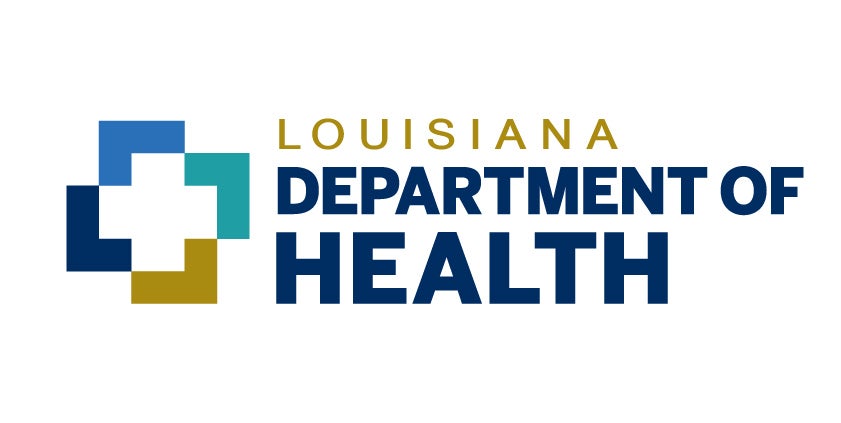A Striking Gap Between Deaths of Black and White Babies Plagues the South
Published 6:30 am Monday, May 22, 2023
|
Getting your Trinity Audio player ready...
|
BAMBERG, S.C. — Years before the Bamberg County Hospital closed in 2012, and the next-closest hospital in neighboring Barnwell shut its doors in 2016, those facilities had stopped delivering babies.
These days, there’s not even an ultrasound machine in this rural county 60 miles south of Columbia, much less an obstetrician. Pregnant women here are left with few options for care.
Federally qualified health centers offer prenatal services in nearby Fairfax and Barnwell, but only when a pregnancy is uncomplicated and only through about 34 weeks of gestation.
During the final weeks of pregnancy, women must transfer their care to the nearest obstetrician, often in Orangeburg, which can be 20 miles away or more, depending on where they live in Bamberg County. Some women travel farther to hospitals in Aiken or Beaufort, where health outcomes are better.
“Most of our women are driving an hour or more from their homes to an OB provider,” said Tracy Golden, a doula and senior program manager for the South Carolina Office of Rural Health.
Although the regional hospital in the city of Orangeburg delivers babies, the birth outcomes in the county are awful by any standard. In 2021, nearly 3% of all Black infants in Orangeburg County died before their 1st birthday.
Nationally, the average is about 1% for Black infants and less than 0.5% for white infants.
Meanwhile, Orangeburg County’s infant mortality rate for babies of all races is the highest in South Carolina, according to the latest data published by the South Carolina Department of Health and Environmental Control.
By 2030, the federal government wants infant mortality to fall to 5 or fewer deaths per 1,000 live births. According to annual data compiled by the Centers for Disease Control and Prevention, 16 states have already met or surpassed that goal, including Nevada, New York, and California. But none of those states are in the South, where infant mortality is by far the highest in the country, with Mississippi’s rate of 8.12 deaths per 1,000 live births ranking worst.
Even in those few Southern states where infant mortality rates are inching closer to the national average, the gap between death rates of Black and white babies is vast. In Florida and North Carolina, for example, the Black infant mortality rate is more than twice as high as it is for white babies. A new study published in JAMA found that over two decades Black people in the U.S. experienced more than 1.6 million excess deaths and 80 million years of life lost because of increased mortality risk relative to white Americans. The study also found that infants and older Black Americans bear the brunt of excess deaths and years lost.
That makes Black infant mortality in the South a complex regional crisis that should alarm everyone, not just future parents, said Georgina Dukes-Harris, senior director for social care at Unite Us, a national technology company focused on societal needs. Birth outcomes for mothers and infants are a leading indicator of population well-being and they run much deeper than health care: They reflect politics. They’re a direct product of generational poverty and racism. They reveal our priorities, Dukes-Harris said.
Often, babies die under circumstances that states, communities, and parents can help control, like making sure infants don’t suffocate in beds or in unsafe cribs, or extending health coverage so that young women can afford to see a doctor before they become pregnant. In many of these respects, the South is failing.
“This is something that has to change,” Dukes-Harris said.
‘An Urgent Problem’ With No Easy Solution
Public health officials are still trying to parse the long-term impact of the covid-19 pandemic, but infant death rates in South Carolina were higher than the national average long before the health care landscape changed in 2020. And a report published by the South Carolina Department of Health and Environmental Control in April shows the rate for non-Hispanic Black babies — who died at a rate nearly 2½ times that of non-Hispanic white infants in South Carolina in 2021 — is growing worse. The death rate among infants born to Black mothers in the state increased by nearly 40% from 2017 to 2021.
“That’s just not acceptable,” said Edward Simmer, director of the South Carolina health department. “It’s absolutely an urgent problem to me.”
It’s a problem, though, without an apparent solution. Multimillion-dollar programs to improve South Carolina’s numbers over the past decade have failed to move the needle. To make things more complicated, separate state agencies have reached different conclusions about the leading cause of infant death.
The state Department of Health and Human Services — which administers Medicaid, the health coverage program for low-income residents, and pays for more than half of all births in South Carolina — claims accidental deaths were the No. 1 reason babies covered by Medicaid died from 2016 to 2021, according to Medicaid spokesperson Jeff Leieritz.
But the state health department, where all infant death data is housed, reported birth defects as the top cause for the past several years. Accidental deaths ranked fifth among all causes in 2021, according to the 2021 health department report. All but one of those accidental infant deaths were attributed to suffocation or strangulation in bed.
Meanwhile, infant mortality is a topic that continues to get little, if any, attention, especially in the South.
A group called the South Carolina Birth Outcomes Initiative meets regularly to talk strategy, but this consortium of the state’s top doctors, nurses, health insurers, and hospital leaders can’t solve fundamental problems, like teaching parents safe sleep habits or connecting all pregnant women to basic prenatal care. According to the Medicaid agency, nearly half of Medicaid-enrolled babies who died before their 1st birthday in 2021 were born to mothers who received no prenatal care.
“There’s good work going on. It’s just in little patches. It’s just not spread out enough to change our overall numbers,” said Rick Foster, a retired physician and former chairman of one of the Birth Outcomes Initiative’s working groups.
Expanding Access to Maternal Care
South Carolina and several other states recently extended postpartum Medicaid coverage for women who give birth, which means their coverage remains in place for one year after delivery. Historically, Medicaid coverage was cut off 60 days after having a baby.
Some experts believe expanding Medicaid coverage to single, working adults who aren’t pregnant and don’t have children — something most Southern states have failed to do — would also help curtail infant deaths. A woman who is healthy when heading into pregnancy is more likely to give birth to a healthy baby because the health of the mother correlates to the health of the infant. But many women don’t qualify for Medicaid coverage until they become pregnant.
Even when they become pregnant and are newly eligible for Medicaid, it isn’t unusual for women in South Carolina to put off seeing a doctor until the third trimester, physicians told KFF Health News. These women can’t afford to take time off work, can’t find child care, or don’t have a car, among other reasons.
Telehealth could improve access if the state’s broadband network were better, said Simmer, the state health department director. The department could also invest in a fleet of mobile vans that provide prenatal care. Each costs just under $1 million, he said. Ultimately, South Carolina needs more doctors willing to practice in rural areas. Fourteen of its 46 counties lack a single OB-GYN, Simmer said.
“We don’t have providers where we need them,” he said. To that end, he added, the state might consider using student loan forgiveness programs as an incentive for new medical school graduates to practice in rural areas of the state, where obstetricians are scarce. Meanwhile, two programs aimed at improving infant mortality in South Carolina, which were backed by millions of dollars in public and private funding over the past decade, were unsuccessful in hitting the goal.
The Nurse-Family Partnership, for example, which pairs expectant South Carolina mothers with nurses for at-home visits, didn’t have a statistically significant effect on birth outcomes, according to an analysis of the multiyear project, published by the Harvard T.H. Chan School of Public Health.
CenteringPregnancy, a separate program that offers small-group prenatal education to pregnant women, also failed to improve birth outcomes, said Amy Crockett, a maternal-fetal specialist in Greenville and one of the lead investigators for the state initiative.
Crockett said she recently returned about $300,000 in grant funding to the Duke Endowment, a nonprofit that funds health, faith, and education initiatives in the Carolinas, because the evidence to support ongoing CenteringPregnancy projects simply wasn’t there.
“It’s not the silver bullet we thought it would be,” Crockett said. “It’s time to move on.”
Birth outcomes experts agreed that racism and poverty lie at the heart of this difficult problem, which disproportionately threatens Black infants and mothers in the rural South. Research shows that white doctors are often prejudiced against Black patients and minimize their concerns and pain.
In South Carolina, the maternal mortality rate increased by nearly 10% from 2018 to 2019, according to the latest data, which found that the risk of pregnancy-related death for Black mothers was 67% higher than for white mothers. Upon review, the state health department determined 80% of those pregnancy-related deaths were preventable.
Disparities related to both infant and maternal deaths deserve urgent attention from both the federal and state governments, said Scott Sullivan, division chief of maternal-fetal medicine at Inova Health System in Northern Virginia. Hospitals also bear a huge responsibility as doctors and health care providers must learn how to fairly and adequately take care of Black women and children.
“The idea that we’re going to solve 400 years of racism in an hour’s worth of bias training is a cruel joke. Systems have to remodel their approach,” Sullivan said. “It’s going to take funding, and it’s going to take a sustained effort.”
KFF Health News is a national newsroom that produces in-depth journalism about health issues and is one of the core operating programs at KFF—an independent source of health policy research, polling, and journalism. Learn more about KFF.
Subscribe to KFF Health News’ free Morning Briefing.






